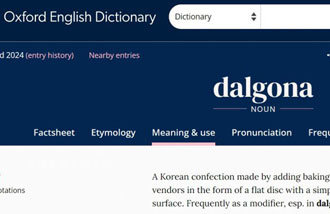Interview with Orhan Pamuk

My Name is Red, Vols. 1 & 2.
Written by Orhan Pamuk, translated by Lee Nan-a
350 pp., 341 pp., 9,000 won, Minumsa
It took no time at all for Orhan Pamuk to sketch an outline of the old capital. My childhood dream was to become an artist, he remarked. Pamuks grandfather was a wealthy magnate in charge of railway construction in Turkey, and his father was an architect. His mother was descended from Ottoman aristocracy.
My father told me to be a construction designer, which is midway between an artist and an architect. So I enrolled in the architectural program at Istanbul University, but eventually I ended up quitting school to become a writer. Id inherited my dads other quality, you see: he had cherished dreams of being a writer too, and had thousands of books in his library. He used to fly to Paris now and then to meet Sartre.
Pamuk has written 10 books so far, but he says that My Name is Red (1998) is the most commercially successful. It was translated in 32 countries, and 700,000 copies have been sold to date, including 200,000 in French translation and 200,000 in English. The book received Frances le Prix du Meilleur Livre étranger in 2002, and Italys Grinzane Cavour Award and the International IMPAC Dublin Literary Award in 2003. Former laureates of these awards include Günter Grass, Doris Lessing, Umberto Eco, and Milan Kundera.
At some point, I decided to stake my reputation on a novel that dealt with pictures, he said, And that novel is My Name is Red.
My Name is Red owes a major part of its international renown to its intellectual fun. The novel successfully juxtaposes the mystery and the romance genres, as if they were two precision-crafted twin building models.
Istanbul, 1591. The height of the Islamic tradition of Miniature Painting, which reflects the eye of Allah. When the humanistic painting style of Venice, Italy begins to seep into this city, artists are thrown into conflict. The sultan secretly commissions an illustrated book of works in the Venetian style. When one of the artists working on the book is murdered, Enishte, the official in charge of the project, calls in his nephew Black, who has been away from Istanbul for the past 12 years, to solve the crime. When Enishte is murdered as well, Black finds himself in the position of having to discover the culprit if only to capture the heart of Shekure, his former lover and Enishtes daughter.
Afraid that Shekures face might fade from his memory, Black laments, If only I had a portrait of her in the Venetian style On the opposite side of the divide, the old master of Islamic miniature painting stabs his eyes with a golden needle, in order to receive the vision of ultimate beauty that Allah would bestow upon him in the sublime darkness.
Reminiscent of Ecos Name of the Rose, this novel resonates in various ways. Islamic fundamentalism and secularism, globalism vs. localism, Western vs. Eastern culture, God and Man, and progress and conservatism all form broad thematic strokes in this unique tale.
The sultan in the novel is modeled after Murat III, Pamuk explains. He spent a large sum of money on collecting art, and in the year 1000 of the Islamic calendar, he ordered the creation of an illustrated book that would go down in history, just like in the novel.
I once visited the Metropolitan Museum of Art in New York to do research for this book. The only people passing by the Islamic miniature paintings were lost Japanese tourists, whereas the galleries hung with Western art were packed to overflowing. It saddened me to see that.
Now, My Name is Red is introducing the world to miniature painting. Six years after its initial publication, countless interview and tour schedules related to the bookin Canada, the Ukraine, Slovenia, the U.K., the U.S., and morefill the space next to his desk.
Ive been writing with a pen for thirty years, Pamuk muses. I have terrible penmanship, so only one editor is able to recognize my writing and type it out for me.
Gazing into the faraway halls of the Topkapi Palace, where miniature artists of yore poured out their passion upon the canvas, Pamuk has been drawing a miniature of his own.
Ki-Tae Kwon kkt@donga.com
Headline News
- Pyongyang test-fires new hypersonic IRBM with longest flight range
- NVIDIA CEO: ‘ChatGPT moment for general robotics just around the corner’
- President security service chief refuses second summons
- NVIDIA CEO: ‘ChatGPT moment for general robotics just around the corner’
- N. Korea fires intermediate-range ballistic missile







